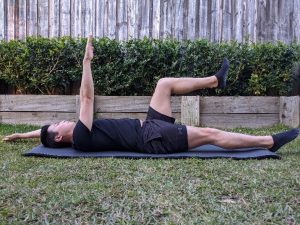Exercise for Lower Back Pain
Longevity Exercise Physiology Drummoyne,Edgecliff, Marrickville,Bella Vista, Randwick, Lindfield and Balmain take a look at exercise as treatment for lower back pain.
The average Australian has a 50% higher chance of experiencing lower back pain than learning how to drive during their lifetime. Whether it’s due to lifestyle, injuries, disease or when we picked up a box the wrong way that one day; having that dull constant ache or sudden sharp sensation in your back can be a huge hindrance in our daily lives—and if severe, could cost us a part of it too. Chronic lower back pain (lasting more than 12 weeks) is the leading cause of disability worldwide and one of the most common reasons for people who have jobs to drop out of the workforce. So where does lower back pain come from? And what can we do about it?
According to Manusov (2012), there are 3 main types of lower back pain by cause:
1) Mechanical (e.g. musculoskeletal strains or sprains, muscle spasm, osteoarthritis, herniated discs, compressed nerve roots, degenerative discs)
2) Non-mechanical (e.g. tumors, inflammatory conditions such as spondyloarthritis)
3) Referred pain from internal organs (e.g. gallbladder disease, kidney infections, aortic aneurysm)
Generally, lower back pain is not a disease so much as it is a disorder caused by a vast number of underlying health problems. For example, obesity, smoking, pregnancy weight gain, stress, poor physical condition, poor posture and sleeping position can also contribute to lower back pain. This is why the specific underlying cause is often difficult to identify and often times, not even looked for (i.e. non-specific lower back pain).
Regardless of the cause, a long-term treatment method that can tackle almost all the culprits is exercise.
Evidence has demonstrated exercise to be effective in decreasing pain and improving physical function, trunk muscle strength and mental health for those with chronic low back pain. Exercise has also been shown to reduce recurrence rates for as long as 6 months after the completion of exercise programs, as well as improving long-term function. Additionally, there has been research to show the effectiveness of exercise in preventing the occurrence of lower back pain altogether.
Furthermore, the one type of back pain that accounts for over 90% of all cases worldwide is mechanical lower back pain, generally caused by bones, discs, tendons, muscles and ligaments interacting in the wrong way. So how do we teach all these structures to interact in the right way? Through targeted, progressive exercise.
Now, what type of exercise is best? Currently, there is no evidence that one particular type of exercise therapy is more effective than another. Therefore, reaching the ACSM’s guideline of 150 minutes of moderate-intensity aerobic exercise (or vigorous intensity exercise for 75 minutes) of coupled with 2-3 days of resistance training, will be beneficial for treating the issues that contribute to lower back pain. For the common mechanical lower back pain, walking, swimming, cycling and running are safe forms of aerobic training that you can do. In addition, below are several exercises below to get you started on increasing lumbopelvic stability and releasing mechanical tension in the lower back.
Deadbug
Lie faceup on the floor with your arms and legs in the air, knees bent at 90 degrees. Brace your core and maintain contact between your lower back and the floor. Then, simultaneously lower your right leg and left arm until both limbs are parallel to the ground (but not touching it). Pause for one second, then return to the starting position and repeat on the opposite side to make one rep. Perform 2-3 sets of 10-20 reps (depending on your fitness level).

Clams
Lie on one side with your knees at 90 degrees and your feet in line with your hips. Raise the top knee (by squeezing your glutes) as far as you can without rotating your hip to the other side. Hold for 1 second before lowering back to the starting position. Perform 2-3 sets of 10-20 reps each side.


Half kneeling hip stretch
Kneel on one knee with the front leg bent at 90 degrees. Now imagine you have a belt on: squeeze the glutes and point your belt buckle towards your chin. Your pelvis should be tilting up slightly and you should feel a stretch in your hips. Hold for 2-3 sets of 30 seconds each side.
Depending on your underlying cause of lower back pain however, some exercises may not necessarily be suitable for your condition. Hence, it is incredibly important to consult with a health practitioner such an exercise physiologist about which exercises are most suitable for you.

Call Longevity to speak to an Exercise Physiologist about exercise as treatment for your back pain.
1300 964 002
Written by Jackie Cheung

